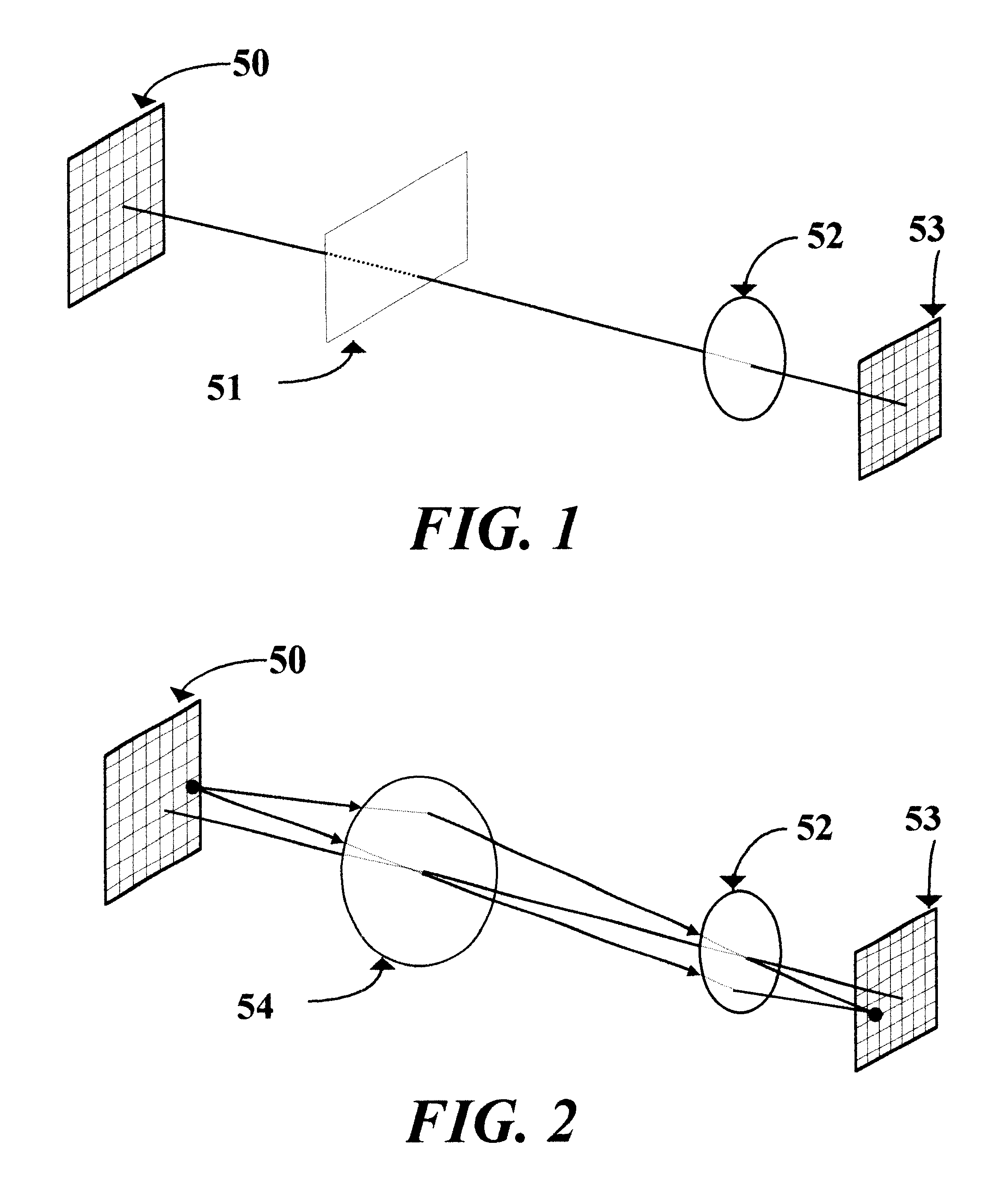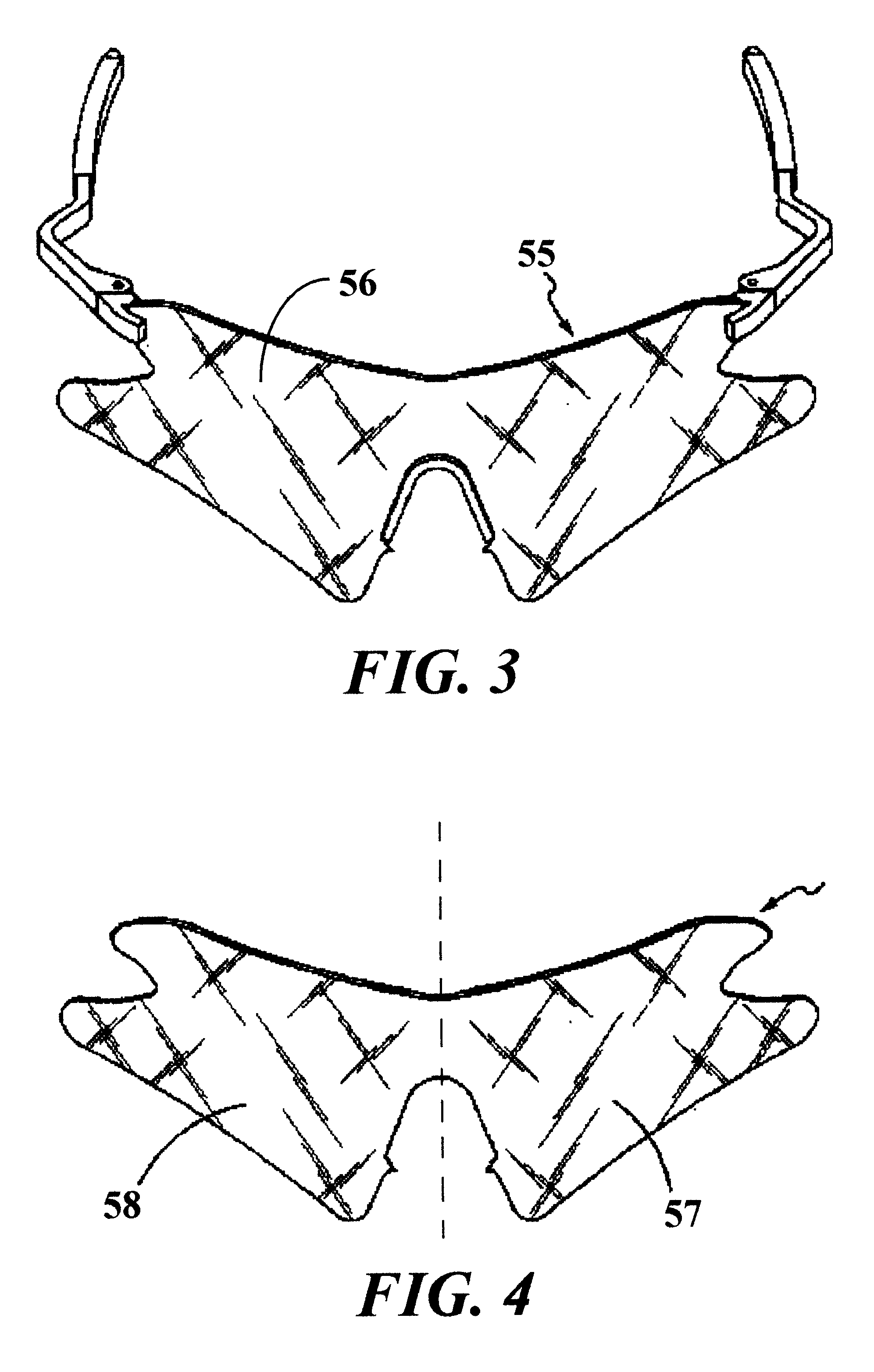Ophthalmic lens synthesized from its specification
a technology of ophthalmology and specification, applied in the field of new prescription lenses, can solve the problems of limited shape and material availability, limited vision, and limited vision, and achieve the effects of optimizing the manufacturing process, reducing diffraction aberrations and image blur, and reducing vision impairmen
- Summary
- Abstract
- Description
- Claims
- Application Information
AI Technical Summary
Benefits of technology
Problems solved by technology
Method used
Image
Examples
example # 2
EXAMPLE #2
The normals to the surface can be calculated by using one of the well know in the art models of astigmatic human eye. Referring to FIG. 20, the locations of all the system parts (i.e., the object 50, the corrective eyewear lens 58, and model of the astigmatic eye 70) are known. The desired image (of the object) on the retina is known from the eye model. The defocus blur image formed by the astigmatic eye (without corrective lens 58) on the retina is known from the eye model. By using Ray-tracing technique, and taking in account the movements of the eye, we can calculate the required microscopic normals of the corrective lens 58 so that the astigmatic effect of the corrective lens optimally cancels the astigmatic effect of the eye, and by that, the desired image will be formed on the retina.
The distances of the object from the eye determine the corrective lens type. For unifocal lens, the object distance is the same over the entire field of view. For multifocal and progress...
example # 3
EXAMPLE #3
There are many more possibilities to solve the well know mathematics problem of obtaining a surface from its normals (step #9). For example, each saw-tooth can be calculated by using iterative algorithms of high order polynomials with continuous partial derivatives at the boundaries (between the normals). Each saw-tooth can be smoothed through spline analysis or technique in such a manner, etceteras.
example # 4
EXAMPLE #4
The decision when to begin a new summation of the slopes for getting a new saw-tooth may depend on the image quality by using iterative algorithm. The discontinuities will be chosen in such a way that the image blur, or any other image quality criterion, will be reduce to the minimum possible and by that produce the best available image quality for the pre-selected macroscopic shape of the lens. Surface durability and tolerance budgeting methods may be used the same way.
4. Protected Thieberger-design-lens
When we wish to avoid a saw-toothed surface or to protect the facets from dirt or damage, we may consider a number of possible modifications as shown in FIGS. 21-24 wherein the saw-toothed surface is protected by protective means. Referring to FIG. 21, Thieberger-design-lens 71 has its saw-toothed surface imbedded in an optical media 72, which has a different index of refraction than Thieberger-design-lens 71, and can be made smooth. That embodiment can be made, for exampl...
PUM
 Login to View More
Login to View More Abstract
Description
Claims
Application Information
 Login to View More
Login to View More - R&D
- Intellectual Property
- Life Sciences
- Materials
- Tech Scout
- Unparalleled Data Quality
- Higher Quality Content
- 60% Fewer Hallucinations
Browse by: Latest US Patents, China's latest patents, Technical Efficacy Thesaurus, Application Domain, Technology Topic, Popular Technical Reports.
© 2025 PatSnap. All rights reserved.Legal|Privacy policy|Modern Slavery Act Transparency Statement|Sitemap|About US| Contact US: help@patsnap.com



